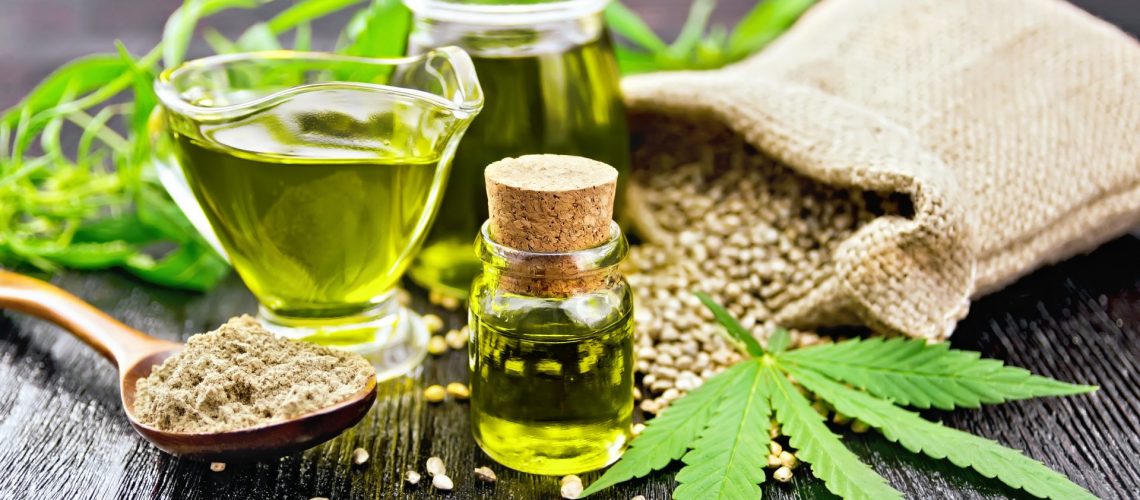Zhou et al. (2020) commented that patients with cellulitis could benefit from CBD oil to help manage the condition. Most patients use antibiotics to treat cellulitis. However, these antibiotics may develop resistance leaving the condition untreated.
According to Hazekamp (2018), CBD oil is derived from the hemp plant. It mainly contains major cannabinoids known as CBD. This compound is not psychoactive like THC; hence cannot make the user high. Urits et al. (2019) also noted that CBD oil treats various conditions and diseases such as nausea, arthritis, cancer-related symptoms, and seizures. CBD oil comes in three major types: broad-spectrum, full-spectrum, and isolates. Broad-spectrum contains all cannabis compounds apart from THC. The full spectrum contains all the compounds in hemp, including THC. However, THC in such products may not exceed 0.3%. CBD isolates contain CBD only. Combining THC and CBD increases the oil’s effectiveness in treating some diseases. CBD oil can be taken orally or applied to the skin.
What is Cellulitis?
The skin is an important organ as it protects us from getting infections from bacteria and viruses. Bacteria and viruses may get into the skin through small cuts on the skin’s surface. Therefore, take care of your skin. Cellulitis is one of the common bacterial infections that attack the skin. It is caused by streptococcus and staphylococcus bacteria that may enter your skin through cracks or cuts on the skin. Bacteria infections can be life-threatening if not treated on time. It may also be hard to treat infections that have spread to all body parts. Cellulitis can also be treated if noticed earlier. This condition makes the skin appear swollen and red. It might also cause a lot of pain in the affected area. Touching an area affected by cellulitis feels warm. It can affect any part of the body but mostly attacks the lower parts of the legs. Cellulitis can cause other complications such as blood infection, tissue death, and bone infection. Wingfield (2012) noted that there are various ways in which you can treat cellulitis at home. Try placing a cool, damp cloth on the affected area to reduce the burning sensation. Elevating the affected area may also ease the pain. You can also buy over-the-counter painkillers to manage the pain. People with a weak immune system like HIV patients and patients in medical care are more vulnerable to this disease.
Symptoms of Cellulitis
Various skin infections might be mistaken for cellulitis. However, there are some unique symptoms of cellulitis, which includes:
- Tiredness accompanied by chills and fever
- Red, painful swollen area on the skin
- Bumps underneath the skin can be felt on touch
- Swollen lymph nodes (especially in advanced stages)
- Blisters filled with pus on the skin.
Types of Cellulitis
Facial Cellulitis
It attacks the face. If you notice swelling and redness on the face that is painful and warm on the touch, it could be facial cellulitis.
Cellulitis of the Extremities
This type occurs on the arms, feet, and legs. It is the most common type of cellulitis.
Periorbital Cellulitis
This type is mostly caused by sinusitis. It affects the skin around the eyes.
Breast Cellulitis
It affects women and attacks the breast and the area around the breast. Patients with breast cancer are more prone to this infection.
How to Prevent Cellulitis
The skin is the outer organ in the body. It is exposed to all sorts of injuries. Bacteria and viruses can get into the skin through injured areas causing infections such as cellulitis. It would help if you covered any cut on the skin to prevent these germs from getting into the body. Dressing cuts using surgical spirits can also help to prevent germs from getting into the skin. You can also wash your cuts using warm soapy water to wash off germs. Applying creams or antibiotic ointment may also stop bacteria from getting into the cuts. If you use bandages to cover your wounds, make sure they are clean. Eating a balanced diet rich in vitamin D and B12 is another way of fighting infections. Taking enough water helps in keeping the skin healthy.
Can CBD Oil Treat Cellulitis?
Recently, many people worldwide have been embracing CBD oil to treat cellulitis and other bacterial infections in the body. Iseppi et al. (2021) also commented that CBD oil could naturally fight antibiotic-resistant bacteria. It is also used as it does not exhibit long-term side effects. To fight infections on the skin, you can apply CBD topicals or take CBD oil orally. However, applying CBD topicals on the skin is more effective than taking it orally. Cannabinoid contains anti-anxiety, anti-inflammatory, anti-epileptic, antidepressant, and therapeutic properties. These properties help fight skin-related infections such as cellulitis, psoriasis, and eczema. Since bacteria cause cellulitis, the antibacterial properties in CBD can treat the condition. Russo (2011) found that combining CBD with cannabigerol and cannabichromene can more effectively eliminate bacterial infections. CBD also helps in reducing pain in the affected area due to its anti-inflammatory properties. It provides the skin with the necessary nutrients making it recover faster.
Precautions and Side Effects of CBD Oil
CBD oil is generally considered safe for use by healthy adults. However, ingesting CBD oil may have some side effects. The most common ones are dizziness, diarrhea, and fatigue. However, these side effects are only common when CBD is taken in excess. Take the right amount of CBD oil to avoid harmful reactions after overdosing. In rare cases, ingesting CBD oil can cause liver damage. It is not well known if CBD is safe for infants and unborn babies; for this reason, pregnant and nursing mothers should only take this product if a doctor prescribes it. CBD might also interact with some medications.
Conclusion
CBD oil contains anti-inflammatory properties. Therefore, it can reduce inflammatory pain on the skin affected by cellulitis. The antibacterial properties of CBD oil can treat cellulitis as bacteria cause it. It does not lead to bacterial resistance, which is very common with other pharmaceutical antibiotics. Take the right dosage to prevent serious side effects such as drowsiness, diarrhea, and fatigue.
References
Hazekamp, A. (2018). The Trouble With CBD Oil. Medical Cannabis And Cannabinoids, 1(1), 65-72.
Iseppi, R., Mariani, M., Condò, C., Sabia, C., & Messi, P. (2021). Essential Oils: A Natural Weapon Against Antibiotic-Resistant Bacteria Responsible For Nosocomial Infections. Antibiotics, 10(4), 417.
Russo, E. B. (2011). Taming THC: Potential Cannabis Synergy And Phytocannabinoid‐Terpenoid Entourage Effects. British Journal Of Pharmacology, 163(7), 1344-1364.
Urits, I., Borchart, M., Hasegawa, M., Kochanski, J., Orhurhu, V., & Viswanath, O. (2019). An Update Of Current Cannabis-Based Pharmaceuticals In Pain Medicine. Pain And Therapy, 8(1), 41-51.
Wingfield, C. (2012). Diagnosing And Managing Lower Limb Cellulitis. Nurs Times, 108(27), 18-21.
Zhou, K., Junqueira, D., Couperthwaite, S., Meyer, J., & Rowe, B. (2020). MP50: Vaping, Tobacco, And Cannabis Among Patients Presenting To The Emergency Department: A Cross-Sectional Study. Canadian Journal Of Emergency Medicine, 22(S1), S60-S61.
[email protected]
- How to Use THC-H TINCTURE - August 11, 2023
- Best THC-B Products Reviewed - August 11, 2023
- The Surprising Skincare Benefits of CBD How This Non-Psychoactive Compound Can Transform Your Skin - January 7, 2023



